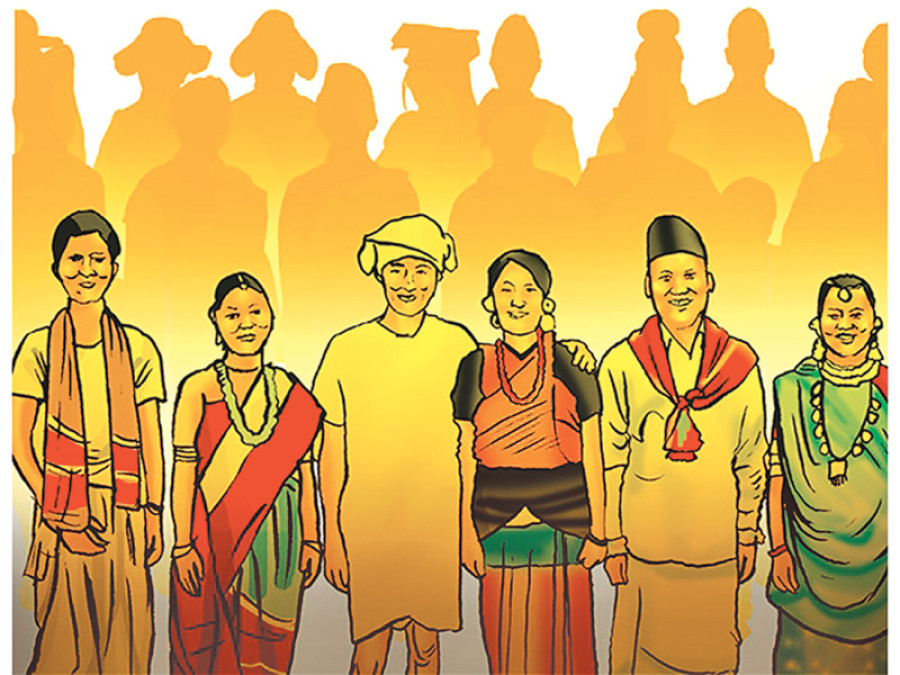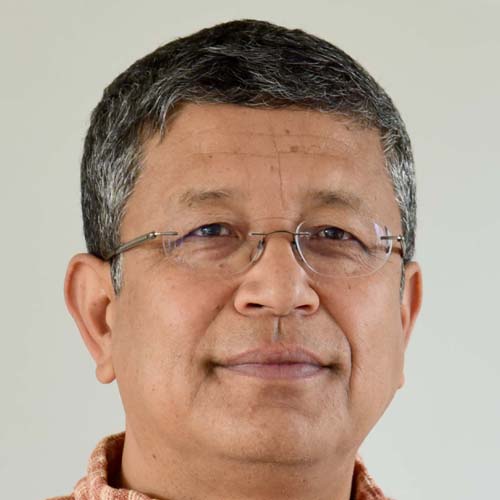Opinion
A nation still in the making
Ethnicity and nationhood need not be mutually exclusive, but Mahendra failed to create a multi-ethnic nation
Deepak Thapa
The wider impact of the Trump presidency is already being felt the world over. Most immediately, in Nepal, it will likely mean the end of the US-funded Family Planning Service Strengthening Program, particularly since the implementing agencies include the religious right’s bêtes noires, the pro-abortion International Planned Parenthood Federation and Marie Stopes International.
The rise of Trump has also meant the enrichment of the political vocabulary in many countries, since it provides a convenient tag with which to tar politicians who are prone to similar demagoguery. Hence, following many others before him, in a recent interview-based write-up Baburam Bhattarai said that just as ‘Trumpism’ is gaining strength in the West, such a trend is being propagated in Nepal mainly under the leadership of Oli, and which he termed ‘Oli-ism’. The reason for such an unflattering comparison, Bhattarai explains, is because our youth are being deceived into believing that the current political problems Nepal is facing have been created by someone else and by a particular community.
The UML was clearly incensed and no less than Bamdev Gautam, one of its
Vice-Chairpersons, came out guns blazing. He gave it right back in a full-page op-ed, declaring that Bhattarai’s attack on Oli to be an assault on Nepal’s independence, sovereignty and integrity—one which no patriot could take lying down. Strong words indeed, but when two comrades lay it on each other, rhetorical hyperbole is only to be expected.
Former comrade vs monarchist comrade
Bhattarai does indeed use some very strong words in denouncing Oli-style Trumpism. He writes that Nepal’s retrograde forces still conceive Nepal as a mono-ethnic state; not to recognise the multi-ethnic reality of Nepal is to ultimately give way to the monarchy since the monarchy derives its strength from mono-ethnicism; that is why there is a natural alliance between the monarchy and Oli-ism; KP Oli is only the face, the agenda is the monarchy’s. Bhattarai borrows the imagery from Nelson Mandela and says that the need today is to embrace diversity in all its forms and create a rainbow nation instead of blaming the current problems on Madhesis and Janajatis.
Gautam lambasts Bhattarai for giving Nepali nationalism a bad name by calling it ‘Mahendriya rastrabad’ (ie, the nationalism fashioned by [King] Mahendra), ‘blind nationalism’ and ‘false nationalism’. He defends his party’s embrace of the monarchs of yore in the following terms: ‘Prithvi Narayan played the main role in laying the foundation for the creation of the Nepali nation. In the new context of later years, it was Mahendra as an autocratic dictator who played the historical role of completing this task of making an independent, sovereign, undivided and unified nation. It is an incontrovertible fact and an historical truth that it was Mahendriya rastrabad that created the Nepali nation. No one can erase this truth till the time Nepal exists and Nepalis remain on this earth.’ And, lest the ex-communist Bhattarai did not get the import of his argument, Gautam rounds off that argument with: ‘That is what the historical materialism developed by Karl Marx says.’
There is more to it. Bhattarai compares Oli to Hitler while Gautam calls Bhattarai an Indian stooge. Charges of racism are thrown about by both. And, in perhaps his strongest indictment of Bhattarai, Gautam writes: ‘Dr Baburam does not see any Nepalis in Nepal. There are only Khas or Madhesi or Janajati...Dr Bhattarai is not ready to accept that the people of all these ethnicities have already become Nepali. Because in his mind, there is no Nepali nation.’
Nation-state vs state-nation
Without delving into Bhattarai’s flailing attempts at remaining relevant in Nepali politics, most recently through overtures to the Madhesi parties, this war of words is instructive since it clearly spells out the position of the UML. As I have argued previously in these pages, the UML needs to shift only slightly to the right for it to be indistinguishable from the RPP. As a party that issued a diktat to its male CA members to dress up in daura-suruwal à la the Panchayat administrators, it was but natural that it would find a great deal of affinity with Mahendra’s vision of what it means to be a Nepali.
Gautam wilfully ignores the fact that Nepal has been defined as a ‘multiethnic’ and ‘multilingual’ country since at least the 1990 constitution, with that definition expanded to included ‘multireligious’ and ‘multicultural’ in the 2007 and 2015 constitutions. True, ethnicity and nationhood need not be mutually exclusive and that a nation can consist of different ethnicities, and that is precisely what Mahendra tried to craft. Unlike in 19th-century Europe where states were created by nations, albeit not always in a perfect fit since small nationalities can be found within the borders of all European states, Mahendra tried to create a nation within the geographical boundaries of Nepal. But, if we also agree that the New Nepal is supposed ‘to end discrimination based on class, ethnicity, language, gender, culture, religion and region and to address the problems of women, Dalits, Adivasi Janajatis, Madhesis...’, as stated in the 2006 Comprehensive Peace Accord, that project failed a long time ago. A nation that discriminates among its citizens on the basis of the various characteristics that define ethnicities is yet a nation in the psycho-cultural sense even if it is one politically and legally, as in all Nepalis being issued the same citizenship card, etc.
Nepal is perhaps the perfect example of a ‘state-nation’ in the making. The concept was introduced by political scientists Alfred Stephan and Juan Linz to distinguish it from a ‘nation-state’. The contrasts they have outlined along various parameters between the two provide a good sense of why Nepal would be better off aspiring towards a state-nation instead of the insistence from the right (and the
neo-right) on a nation-state. I quote:
Sense of belonging or ‘we-ness’: (Nation-state) There is general attachment to one major cultural civilisational tradition. (State-nation) There is attachment to more than one cultural civilisational tradition. However, these attachments do not preclude identification with a common state.
Cultural policies: (Nation-state) There are homogenising attempts to foster one core cultural identity, particularly one official language…The goal is unity in oneness. (State-nation) There is recognition and support of more than one cultural identity within a frame of some common polity-wide symbols. The goal is unity in diversity.
Ethnocultural or territorial cleavages: (Nation-state) Such splits are not too salient. (State-nation) Such splits are salient, but are recognised as such and democratically managed.
Political identity: (Nation-state) Citizens feel that they belong to the state and to the same cultural nation at the same time. (State-nation) Many citizens have multiple but complementary identities.
Obedience and loyalty: (Nation-state) Citizens believe in obedience to the state and loyalty to the nation. (State-nation) Citizens feel obedience to the state and identification with its institutions; none of this is based on a single national identity.
There is more but this suffices to provide a general sense. Which is also why I fail to understand Bhattarai’s emphatic statement that it would be impossible to win an election in Nepal with the kind of racist talk Trump indulged in because all groups are in a minority here. For someone who has been advocating a directly elected president, Bhattarai has yet to realise that it is precisely that system that allowed Trump to prevail in the end. The coalition politics of parliamentary systems in multi-ethnic countries may be messy, but at least it spares the kind of polarisation we are now witnessing in the US. Just imagine what an Oli presidency would feel like at this juncture.




 9.12°C Kathmandu
9.12°C Kathmandu










%20(1).jpg&w=300&height=200)

